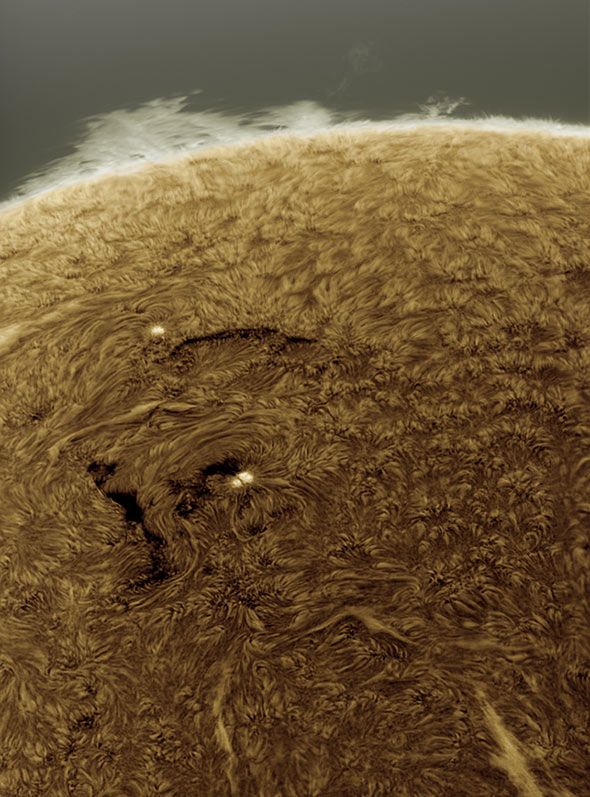Create a free profile to get unlimited access to exclusive videos, sweepstakes, and more!
The Shaggy Sun

The Sun has been pretty active lately, popping off a series of fairly powerful X-class flares; they've been generating aurorae and other magnetic phenomena on Earth.
But even before it started spouting off it was still busily doing Sunny things. Recently it was almost as if it was posing for photographers, and when you get someone like Alan Friedman—who knows his way around a solar photo—you get beauty and majesty.
That shot was taken on Sept. 1, 2014, and shows a portion of the Sun. I know, it looks weird, doesn’t it? He uses a filter that only allows through a very narrow slice of color emitted by warm hydrogen, and this tends to emphasize the gas under the influence of magnetic fields. He also does something tricky: He uses the negative of the image to enhance details.
So the bright spots are actually dark sunspots! The few you see in this image are roughly the size of the Earth, if you want your sense of self-importance vaporized today.
The other features are prominences, filaments, and, apparently, a shag carpet covering the Sun that it still has from the 1970s. All of these features are magnetic in nature. The Sun’s extremely complicated magnetic behavior starts deep within, with magnetic field lines connected to moving cells of ionized gas (called plasma). As these huge packets of gas rise to the surface through convection, their magnetic fields lines move plasma around on the surface. The lines can also get tangled up and then snap, releasing their energy as solar flares.
The gas packets cool when they reach the surface, but sometimes the magnetic field acts like a net, trapping that gas. It can’t sink, and it cools more than the surrounding gas, so it looks dark in comparison. Sunspots!
All this information is hidden unless you look at the Sun in just the right way, examine what it’s doing by slicing up and dissecting its light as it reaches Earth (or space-based observatories). When you do, you get knowledge, as well as profoundly beautiful (and, sometimes, profoundly odd) portraits of our nearest star.
So go take a look at more of Alan's photos. Trust me: You'll be glad you did.


























